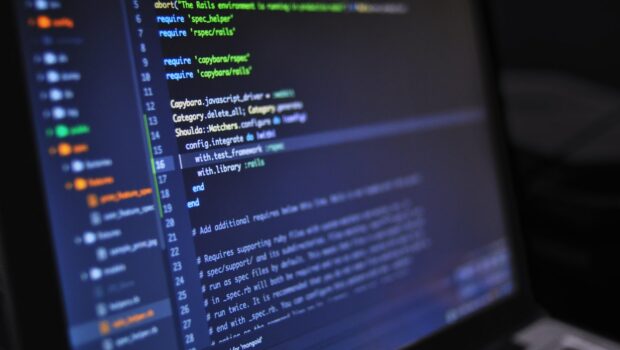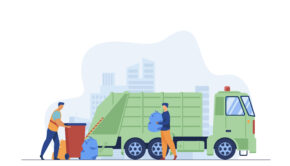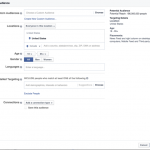Impact of IoT Technology on Consumer Lifestyle
The Internet of Things or IoT technology is fast-growing, and it has already become so popular that it has even taken over consumer lifestyles. When something as revolutionary as the IoT takes over something as influential as customer lifestyle, our everyday life is also bound to change. Introducing IoT technology into consumer applications gave numerous advantages to people across the world.
The IoT age has made way for responsive services and shorter feedback loops which effectively created a more convenient and faster way of accessing products and services. The IoT even makes room for remote fixes and helps you allocate resources more effectively, and the list goes on and on. Although initially, most of us thought that IoT technology is a luxury consumption, and it isn’t entirely wrong to think that either.
Is IoT a Luxury Today?
The fact is that IoT was always going to go mainstream eventually. We have often witnessed the same trend many times over where a new advanced technology that starts off as luxurious becomes an everyday thing within a couple of years. A perfect example of this is mobile phones, they started as a luxury item, and the same goes for laptops. But now, they have become everyday things that every house has, and similar is the case of IoT.
What’s more interesting is that the time required for new technology to go mainstream has significantly reduced in the past few years. The tech market is growing at a pace never seen before, with more and more new tech innovations making their way into our day-to-day lives. IoT devices have quickly gained popularity that our homes are not merely homes anymore because they are now called smart homes. Therefore, it is safe to say that IoT is not a luxury anymore.
The Importance of IoT for Consumers Today
IoT brings a lot of new advantages to the consumers: it streamlines online services and enhances their responsiveness. Today we have smartphone subscriptions of around 3.9 billion! That is, more than half the population already has access to smart devices. More importantly, most IoT devices in our homes are controlled with a mobile phone as the hub. This includes your everyday smart appliances like speakers, TVs, lights, and so on.
Another aspect that is pivotal in the mainstream use of IoT devices for shopping or consumer-related purposes is the introduction of 5G, which will make our IoT devices even faster and effective. This will naturally lead to an improved response time and also provide the bandwidth for millions of IoT devices to communicate with each other. Furthermore, 5G also brings to the table a reduced energy usage, making it the ideal time for IoT devices to take over our daily routines and lifestyle.
It’d be foolish to think that the Internet of Things will merely get streamlined under such circumstances. We’ll likely get to see some innovative ideas that will make life easier for all of us. The one field that is bound to undergo significant change in consumer lifestyle because eCommerce has been at the forefront of bringing new technology to the world.
The potential of IoT technology to influence consumer lifestyles is immense because the possibilities are practically limitless. A more streamlined version of IoT will help the consumer move towards developing a more encompassing shopping experience. Additionally, the consumer interactions get observed and help in shaping the IoT devices and services.
How IoT Technology is Influencing the Consumer Lifestyle
The IoT technology has come a long way since its inception to the point that it has become mainstream. Today we don’t just have smart IoT devices, but an entire system of IoT devices, and our homes have become smart thanks to the IoT technology. IoT technology, along with eCommerce, is on its way to revolutionize consumer lifestyle, and we have already made some major steps towards this. Below we discuss some of the changes that IoT has made in consumer lifestyle.
IoT for Hyper-personalization
Personalization goes on to a whole new level when we bring IoT to the mix. The system is more connected to us and everything that makes our life easier and comfortable. This means involving your smartphone, which is more than likely to act as the hub that can control everything. Although we have made massive strides in IoT, we still fall short when it comes to providing real and relevant value to the consumer.
Hyper-personalization is perhaps one of the biggest advantages IoT brings to the table. It uses advanced AI (artificial intelligence) and real-time data to provide the user with the most relevant content, product, or service. This, when coupled with IoT, takes on a whole new level because the information can now be accessed across multiple devices, and the user has the convenience of choosing the device.
Smart Homes, Smart Solutions
Smart homes are, without question, one of the greatest impacts made by IoT in people’s lifestyle but, more precisely, the consumer lifestyle. Now, instead of looking up a product online through your phone, you can just tell Alexa to find it for you. This would have sounded straight out of a futuristic movie ten years ago. The consumer has complete control with an IoT system in place as he/she can search for products pretty much anywhere.
Imagine this. You are in the kitchen cooking up something delicious while blasting music on your smart speaker. Halfway through, you notice that you need to get this week’s grocery. Now, suppose you don’t have your phone with you, you could simply use the voice command on your smart speaker to search for groceries online, and if you are someone who regularly buys from the same website, you can easily add them to your cart as well.
The best thing about IoT devices in our daily lives is that they can make life much more convenient for us. And eCommerce is at the forefront of changing lives for all of us. Thanks to the eCommerce industry’s efforts, IoT is growing at a pace fast enough to influence the daily lives of people all around the world.
Challenges in Involving IoT With Consumer Lifestyle
IoT may seem like a perfect system to those of us who want the future to be here and now, but that does not mean everyone feels the same way. There are a lot of practical challenges involved in implementing IoT technology in our day-to-day lives, and not all of them are technical challenges. Below we discuss some of the major challenges that could potentially stop IoT’s active involvement in consumer lifestyle.
Privacy and Security Concerns
A survey in 2016 by the Mobile Ecosystem Forum found that nearly 60% of people all around the world had concerns about connected objects or IoT devices. But this was almost seven years ago, and things have changed in this short time. Remember how people were skeptical about Tesla’s automatically driven cars? Now, you can see people drooling over the same car.
Although people have grown to trust IoT devices over the past years, it is still a touchy topic for many people. Most of the concerns are regarding the privacy and security concerns of IoT devices. This concern is even worse when the consumer is dealing with IoT devices like smart speakers, which can understand what you speak and relay that information to a different system.
People want to keep their private lives private, and they don’t necessarily enjoy the targeted ads. So, you are walking on thin ice when it comes to IoT devices’ privacy and security concerns, and the onus is upon the service provider to rectify their concerns.
Buying a Brick
Bricking is when a consumer electronic device gets damaged beyond repair, making it completely useless, and more often than not, this often happens because of damaged firmware. The consumers are concerned that the product they buy may as well end up being a brick. No one wants to buy an expensive smart home technology that may get bricked or have it wired to their home.
Remote Enforcement
DRM or Digital Rights Management is used to protect IoT technology, and it’s mainly focused on stopping digital piracy. However, they do sometimes turn autonomous and bring in updates that restrict the flexibility of the consumer.
Poor Aftercare From Companies
IoT devices are relatively new, and there is more than one way we as a user can mess it up. Maybe it’s something as simple as dropping it, and maybe you decided to use the IoT device to download new music from the internet, which unsurprisingly turns out to be a virus. It is the second kind that often gets you in trouble, and you may even end up getting no aftercare from the companies too.
Author bio:

Jennifer Simon is working as a WooCommerce development strategist at the eCommerce development company in New York – Virtina. She has more than eight years of experience working with leading companies from all industry verticals including B2B and B2C clientele. She is currently committed to chalking out the most profitable and impactful strategies for clients.
Cover Photo by luis gomes from Pexels















